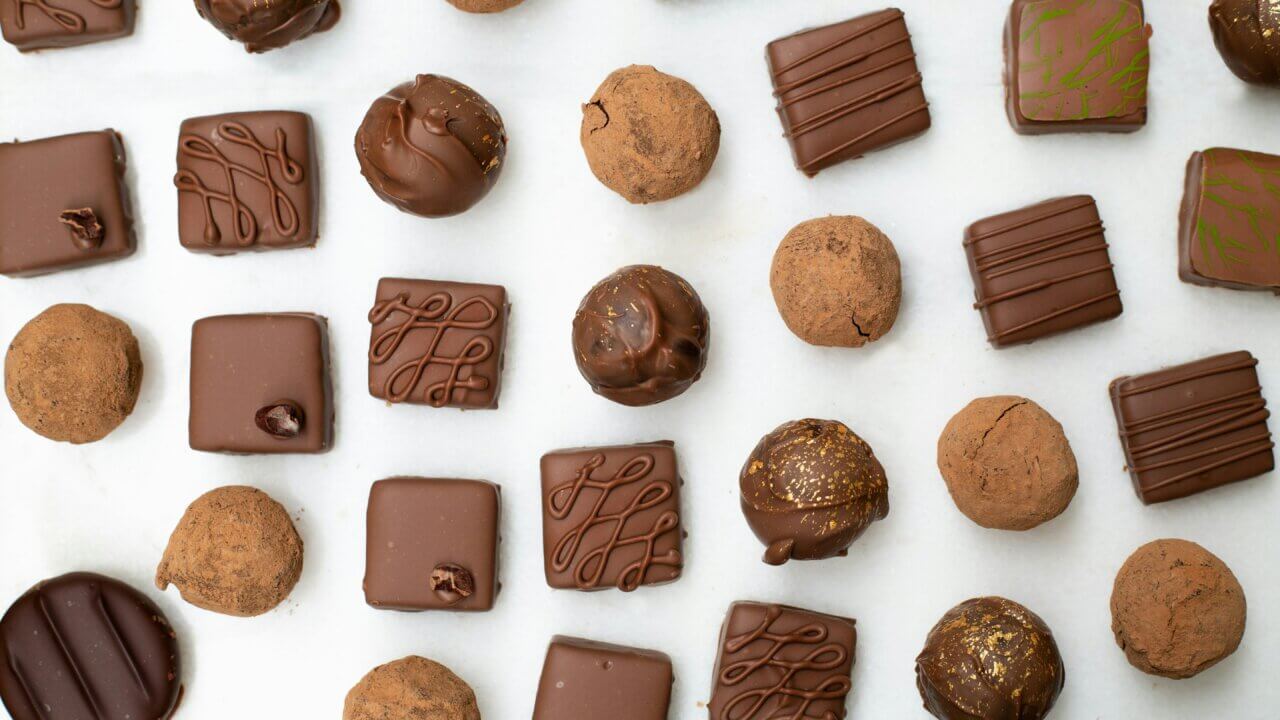Our Thoughts
Life is Like a Box of Chocolates How chocolate box packaging has changed with culture
With International Chocolate Day approaching, we’ve been reflecting on the long-standing cultural tradition of gifting chocolates, and what this means for chocolate box packaging today.
Since the age of the Aztecs and Mayans, chocolate has been deeply embedded with notions of gifting. Believed to be a gift from Quetzalcoatl, the serpent-bird god of wisdom, cocoa seeds held such value that they were anciently used as a form of currency in Mesoamerica. In its drinking form, chocolate was enjoyed in the court of emperor Montezuma, and even presented as a gift to early conquistadors, such as Hernan Cortez. After the Spanish conquest of the Aztecs, chocolate carried its associations with luxury and indulgence over into Europe. Sweetened with sugar and honey, and imbued with a sense of exotic splendour, chocolate proceeded to take hold of European courts, promoted and gifted by Spanish queens. Since then, chocolate has been used as a gift of appreciation, due to its original high-value status and sensually indulgent allure.
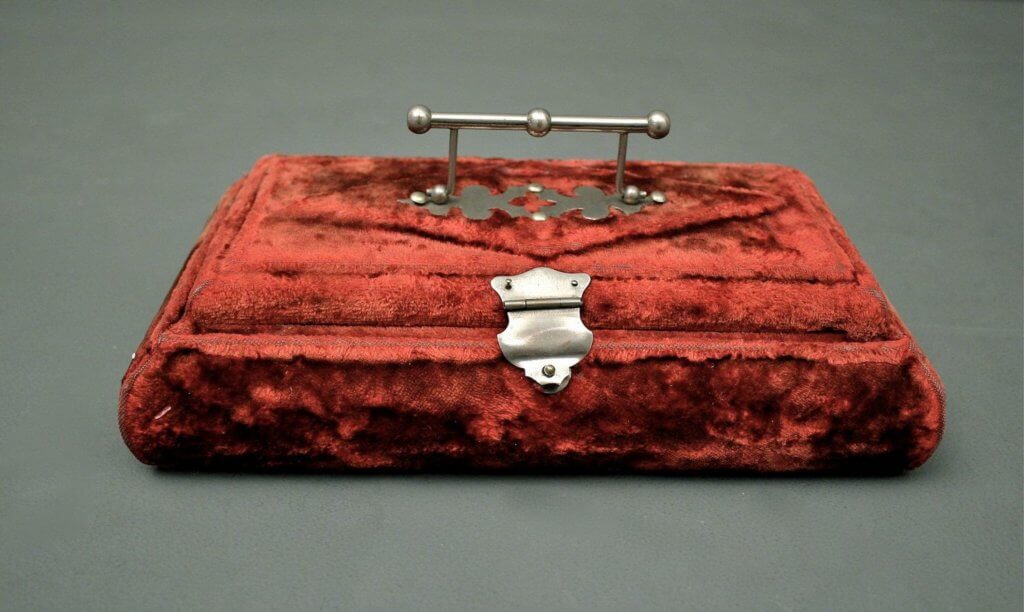 |
|
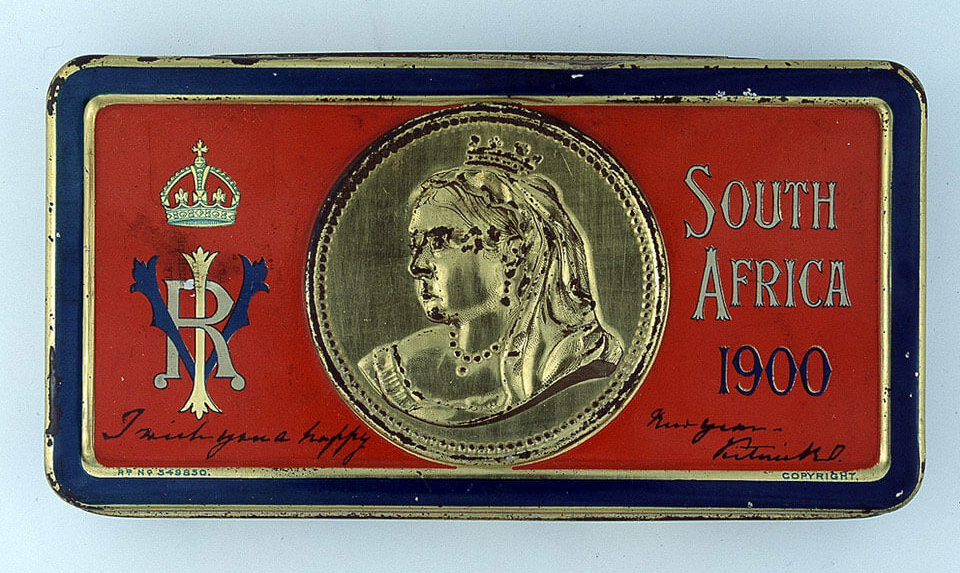 |
|
Cadbury’s Chocolate Box, early 1900s
|
|
Queen Victoria Chocolate Gift Box, 1900
|
However, it wasn’t until the Victorian era that chocolate’s cultural association with fine gifting was formally commercialised and branded for mass-market consumption. In 1853, John Cadbury transformed the British chocolate category by introducing the first ever-known marketed box of chocolates. From Cadbury’s handmade silk boxes, to Queen Victoria’s inscribed gold chocolate tins (gifted to troops serving in South Africa in 1899) – finely wrapped and lavishly decorated chocolate boxes have since stood as a cultural signifier of love and appreciation, central to European gifting rituals, be it for Mother’s Day, Christmas, Valentine’s Day or Birthdays.
To this day, many mainstream brands continue to uphold the traditional notion that the apparent cost value of a chocolate gift intrinsically reflects its emotional value. Chocolate’s traditional associations with high-value worth and sensual indulgence are signalled on boxed packaging through the use of conventional (albeit residual) cues of luxury. From Godiva to Lindt and Ferrero Rocher, you’ll find silk bows, sumptuously layered wrapping, black and gold colour schemes, and embossed cursive, serifed typography.
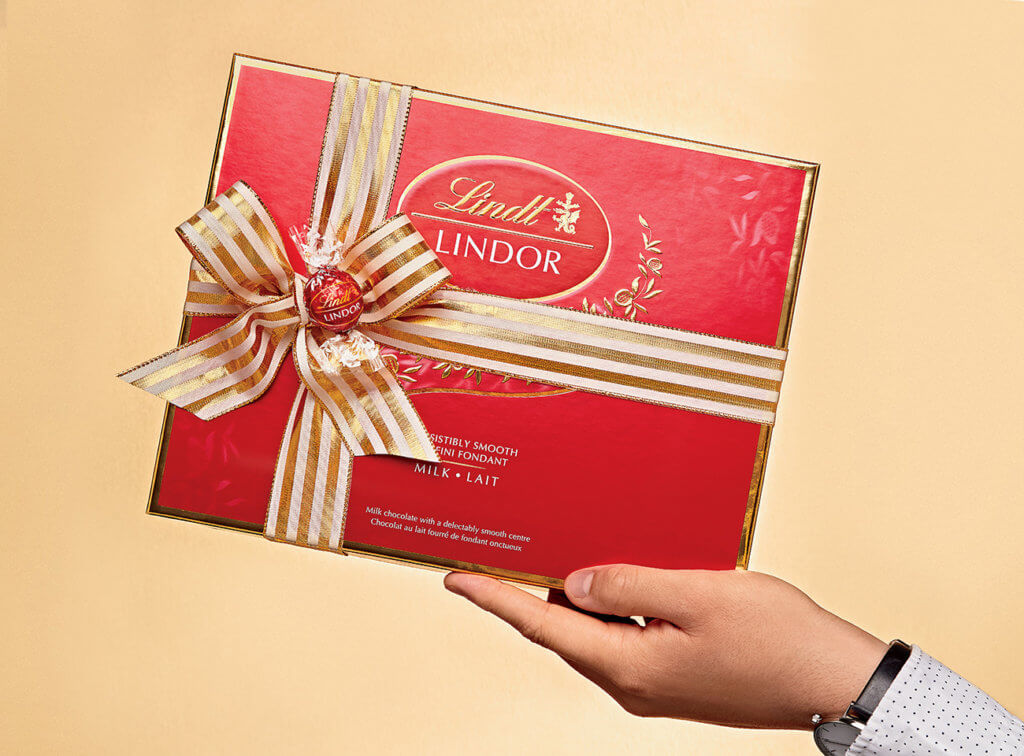
However, it seems that today, in a world facing a cataclysmic climate crisis, increasing inequality and unprecedented social distancing norms, the opulence and superfluously wasteful packaging materials of the traditional chocolate gift-box is leading to a loss in cultural relevance. Newcomer brands are changing the chocolate gifting landscape by embracing present-day socio-cultural values that are increasingly considered to be of greater worth: convenience, eco-friendliness and measured enjoyment (rather than unrestrained indulgence). As a result, emergent chocolate brands such as Love Cocoa and Montezuma have followed trend-setters in a diverse number of unexpected categories (such as laundry detergent, flowers, and period products), by embracing the humble yet delightful letterbox package. Sustainable, understated, and conveniently functional, the chocolate letterbox adequately responds to shifts in present day values, which have impacted gifting ideals and consumer desires.
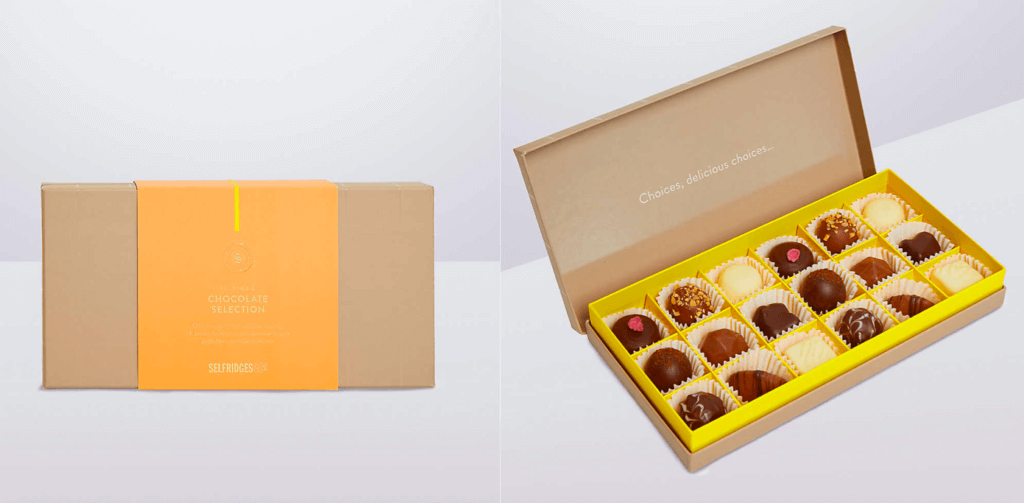
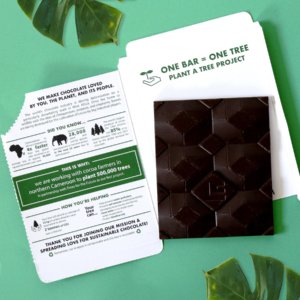 Forgoing the superfluous elements of traditional chocolate gift packaging, which are now seen as wasteful polluters, the chocolate cardboard letterbox uses minimal materials – integrating greeting card, wrapping, frills and product description pamphlets into the core packaging itself – with decorative elements, product info and greeting messages printed onto the top and bottom of the lid. Selfridge’s Chocolate Selection box (part of the company’s Project Earth range) and Gnaw’s Letterbox Chocolates opt for undyed cardboard, emphasising naturality and eco-friendliness. All in all, the letterbox’s slim format, economical use of space, and recyclable cardboard material signals thoughtful sustainability in place of lavish splendour – a greater measure of emotional value and care in contemporary gifting society.
Forgoing the superfluous elements of traditional chocolate gift packaging, which are now seen as wasteful polluters, the chocolate cardboard letterbox uses minimal materials – integrating greeting card, wrapping, frills and product description pamphlets into the core packaging itself – with decorative elements, product info and greeting messages printed onto the top and bottom of the lid. Selfridge’s Chocolate Selection box (part of the company’s Project Earth range) and Gnaw’s Letterbox Chocolates opt for undyed cardboard, emphasising naturality and eco-friendliness. All in all, the letterbox’s slim format, economical use of space, and recyclable cardboard material signals thoughtful sustainability in place of lavish splendour – a greater measure of emotional value and care in contemporary gifting society.
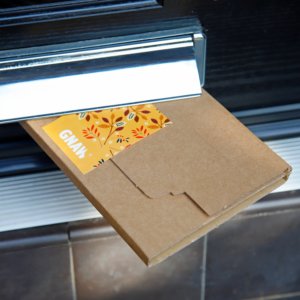 As the name suggests, chocolate letterbox packaging comfortably fits through a standard letterbox. This is undoubtedly of increasing convenience, as the past year has seen a sharp rise in home deliveries and online orders due to the pandemic, with the closure of shops and the threat of Covid-19 increasing the appeal of online rather than on-site gift shopping. In fact, since lockdown, Hotel Chocolat’s online sales are estimated to have more than trebled. Unlike larger, standard forms of chocolate gift boxes, the letterbox allows for contactless delivery, ensuring the safety of the recipient, whilst also conveniently guaranteeing the gift’s arrival, even if the recipient is not home. While the traditional chocolate gift box might have been hand delivered and shared between the giver and the recipient, today’s present circumstances favour a box that can safely and conveniently bring a moment of warmth and care for those that are physically distanced.
As the name suggests, chocolate letterbox packaging comfortably fits through a standard letterbox. This is undoubtedly of increasing convenience, as the past year has seen a sharp rise in home deliveries and online orders due to the pandemic, with the closure of shops and the threat of Covid-19 increasing the appeal of online rather than on-site gift shopping. In fact, since lockdown, Hotel Chocolat’s online sales are estimated to have more than trebled. Unlike larger, standard forms of chocolate gift boxes, the letterbox allows for contactless delivery, ensuring the safety of the recipient, whilst also conveniently guaranteeing the gift’s arrival, even if the recipient is not home. While the traditional chocolate gift box might have been hand delivered and shared between the giver and the recipient, today’s present circumstances favour a box that can safely and conveniently bring a moment of warmth and care for those that are physically distanced.
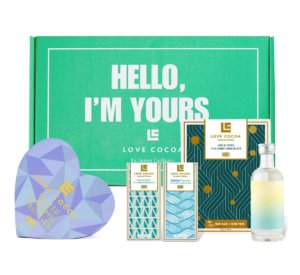 Whilst chocolate has traditionally been positioned as a sinfully delectable indulgence, emergent chocolate culture shifts away from sensuousness towards measured enjoyment, as sweet milky treats are giving way to a trend in darker, more bitter chocolate with unexpected, exploratory flavour combinations. As a result, chocolate letterbox packaging designs are mirroring broader shifts in chocolate packaging away from extravagant baroque flourishes towards minimalist, sophisticated, yet experimentally playful graphics.
Whilst chocolate has traditionally been positioned as a sinfully delectable indulgence, emergent chocolate culture shifts away from sensuousness towards measured enjoyment, as sweet milky treats are giving way to a trend in darker, more bitter chocolate with unexpected, exploratory flavour combinations. As a result, chocolate letterbox packaging designs are mirroring broader shifts in chocolate packaging away from extravagant baroque flourishes towards minimalist, sophisticated, yet experimentally playful graphics.
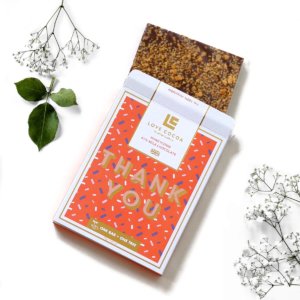 The bright pops of colour, playful language (e.g. “Hello I’m Yours”) and contemporary patterned designs of Love Cocoa’s letterbox chocolates (founded by none other than James Cadbury’s great- great- great- grandson!) not only reflect these emerging chocolate trends, but they also communicate celebratory fun in the creative style of greeting-cards. In doing so, this style of chocolate letterbox packaging is able to increase the emotional appeal of contactless gifting, bringing a sense of delight and discovery through distinctive, innovative, and culturally relevant pack designs.
The bright pops of colour, playful language (e.g. “Hello I’m Yours”) and contemporary patterned designs of Love Cocoa’s letterbox chocolates (founded by none other than James Cadbury’s great- great- great- grandson!) not only reflect these emerging chocolate trends, but they also communicate celebratory fun in the creative style of greeting-cards. In doing so, this style of chocolate letterbox packaging is able to increase the emotional appeal of contactless gifting, bringing a sense of delight and discovery through distinctive, innovative, and culturally relevant pack designs.
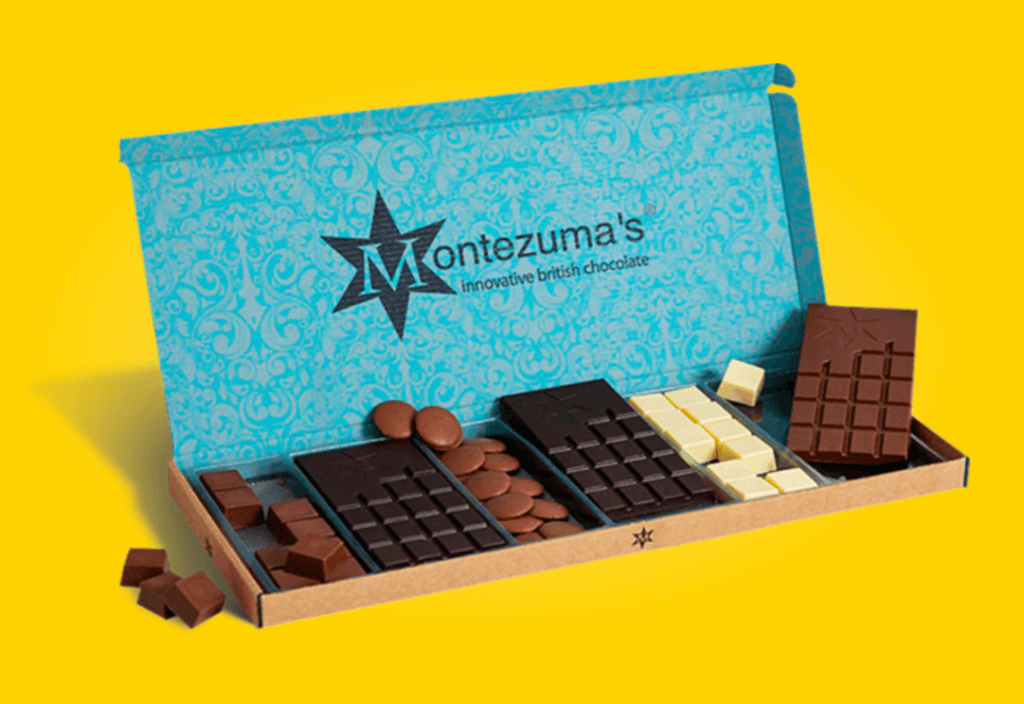
As social norms continue to shift, with increasing appreciation of sustainability, convenience and sophisticated enjoyment (rather than extravagance, wealth and luxury), packaging design both within and beyond the chocolate category will need to continue to align with an emerging gifting culture that reflects these values.
